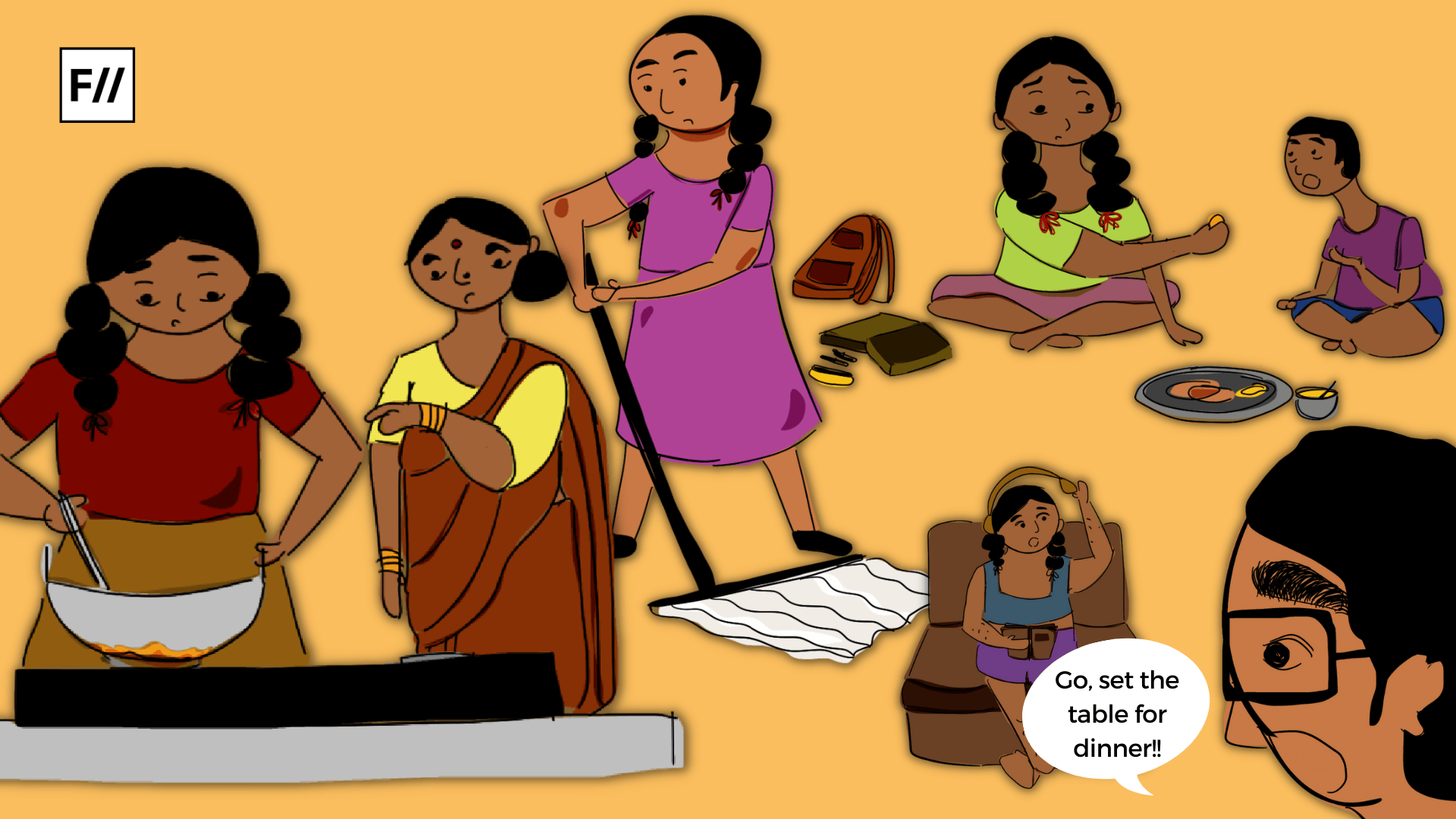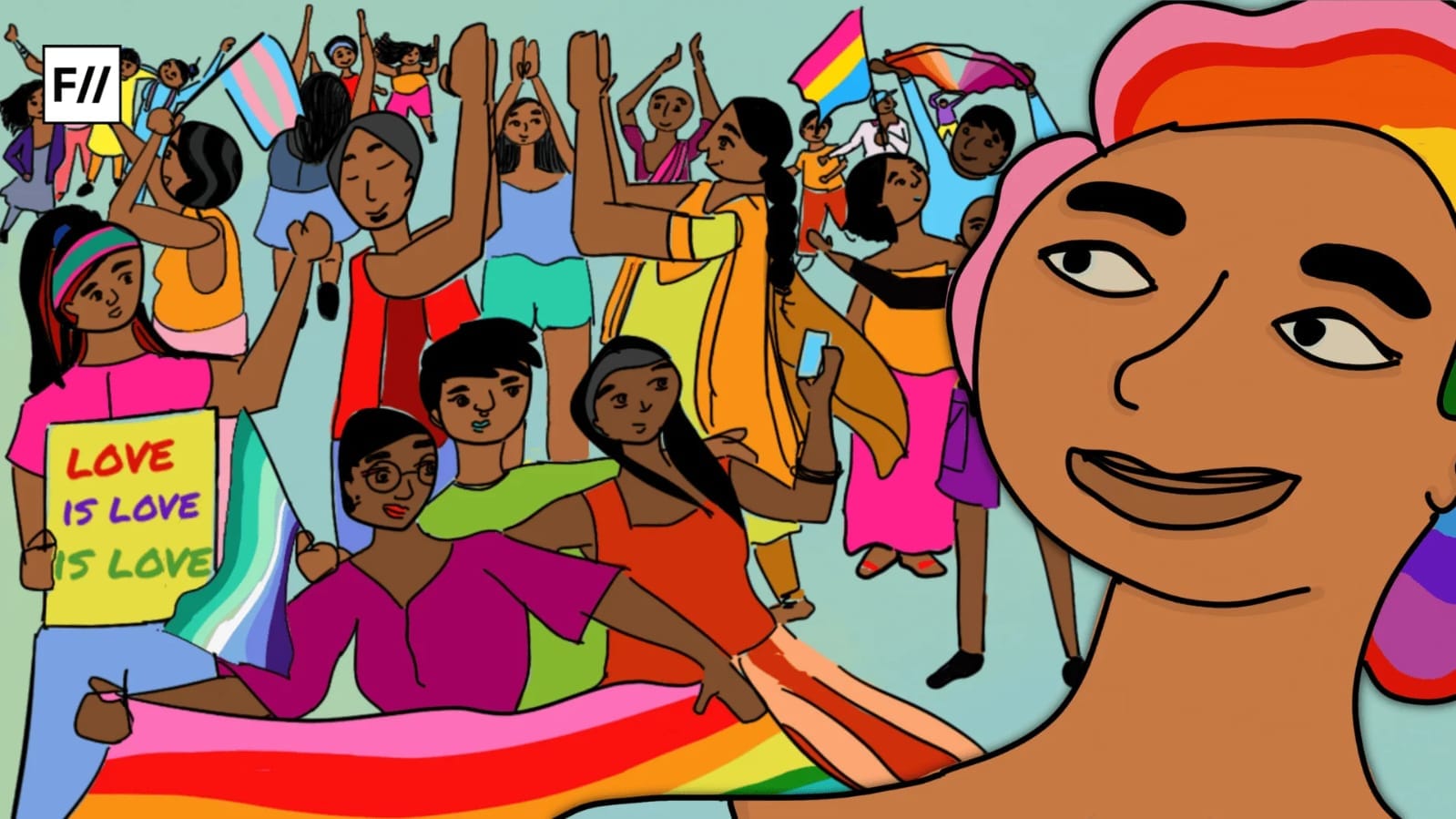We all have acquainted ourselves with the term ‘Eldest Daughter Syndrome’ in recent times. The term, though it has become popular through TikTok ans other social media, has its origin rooted in patriarchal parenting. The eldest daughter syndrome is synonymous with high expectations and unrealistic standards for the oldest daughters of the household who act as a substitute for their mothers at a very early age. They provide emotional and nurturing support to their families, often leading to developing mental health issues and unhealthy coping mechanisms as an adult. The emotional load that oldest daughters often assume from an early age in many families is huge, and they are even encouraged to shoulder that burden
From sorting shopping orders or online deliveries to caring for younger siblings, assisting with daily chores, and tending to ailing parents, eldest daughters frequently bear a heavy yet unseen load of domestic responsibility from an early age
From sorting shopping orders or online deliveries to caring for younger siblings, assisting with daily chores, and tending to ailing parents, eldest daughters frequently bear a heavy yet unseen load of domestic responsibility from an early age. Parents often argue that given that they are meant to be older and more mature than their younger siblings, shouldn’t the oldest children assist and look after them? Girls are “naturally” more compassionate, right? Because these widely held beliefs are so deeply ingrained, it may be challenging for us to recognise the issue.
The status of the eldest daughter in a South Asian family
The phrase “eldest daughter syndrome” is quite relatable for women from a wide range of minority ethnic backgrounds, but it seems to speak particularly to South Asian people. The phrase describes the eldest daughter’s experience of being forcefully assigned tasks that are meant to be the parents’ responsibility from a young age.
Gender inequality at home: parentifying daughters
Often in many South Asian households, the eldest daughter is held responsible for playing the role of the mother and nurturing her younger siblings, taking care of the household responsibilities and resuming her duties to be accepted as a giving and perfect child. Studies reveal that children contribute significantly to domestic work, a contribution that is frequently disregarded. Girls between the ages of five and fourteen spend forty per cent more time on household chores than boys, which is similar to the gender gap in adulthood. In a patriarchal hierarchy, the oldest daughter typically takes on the most responsibility among her siblings.
Many on TikTok have expressed how the syndrome, also known as parentification, can harm eldest daughters’ mental health and “steal” their childhood as they are forced to take on an excessive amount of adult responsibilities too soon. By doing this, it perpetuates the disparity between genders in domestic work across generations. The role of parenting plays an important part in the lives of children, and if the parent is absent in their duties due to any reason, the child often ends up developing attachment and relationship issues that create the core of hyperindepence and loneliness as most commonly seen in eldest daughters.
The oldest daughter is frequently viewed as an emotional outlet for unpleasant emotions.
In a household where women are expected to support their male family members, young South Asian girls and boys are treated in very different ways. Research on the “eldest daughter syndrome” revealed that eldest daughters have additional responsibilities in addition to housework; they are also expected to shoulder their parents’ and siblings’ emotional burdens. In many South Asian households, the eldest daughters are expected to take on the role of emotional caregiver for their families. The oldest daughters are raised to believe they have to settle all family disputes and that they must make them right. The complexity of being an elder daughter in a South Asian household often revolves around the constant need to be a responsible elder sibling that bears empathic abilities and nurtures her family with sensitivity and warmth.
Oftentimes this leads to an emotional burden on the eldest daughter which forges her either into becoming extremely independent and secretive or displaying people-pleasing tendencies. The traumatic bonds that are forged in such toxic environments often lead to unhealthy coping mechanisms of these eldest daughters as an adult
The tendency to become an anxious overachiever as a result of elder daughter syndrome.
The acceptance and validation that a child receives from their parents in their early stages develop their innate confidence and their self-belief. Often in a South Asian household, the elder daughter is demanded to be a high performer and overachiever to be called an ideal child. The pressure of performing well in all spectrums of her life, both in the externality and the internality of her existence, leads her to develop the tendencies of perfectionism and deriving her validation from external sources, most likely other people or her achievements.
Many of the frequent outcomes include the emergence of anxiety symptoms, low self-esteem, difficulty establishing boundaries, and many other issues. Israa Nasir, a South Asian psychotherapist, supports the sentiment expressed by many girls in the online discussion by calling “eldest daughter syndrome” a ‘real problem.’ She says that in both their platonic and romantic relationships, many of her younger clients imitate the behaviours that they developed as the oldest daughters. In her tiktok video it was also noted that many times these clients feel as though they have to assume the unwelcome role of caregiver. Her advice to anyone who could relate to the “eldest daughter syndrome” is to reconsider their behaviour patterns, redirect their energy towards themselves, and develop the ability to set clear boundaries.
Abuse and trauma as a dire consequence of the eldest daughter syndrome
One of the most gruesome consequences of the eldest daughter syndrome is the victim experiencing childhood trauma and abuse. Often seen in South Asian households, parents justify physically beating and abusing their children as a means of disciplining them for their actions. While they think it is justified on their part, this is more common with older children. The eldest daughter syndrome also forges from the experiences of micromanaging and physically abusing their daughters because the parents think their children are at fault.
As per the findings of the Crime Survey for England Wales (CSEW) conducted in March 2018, 6.9% of women aged 16-74 reported having experienced domestic abuse at least once a year. 3.4% of the individuals who had experienced abuse were of South Asian descent. Although these are documented cases, experts all over the world believe that the unreported and unheard realities may be far worse. It is not customary in South Asian culture to take your problems outside of your family, according to Dr Tina Mistry, a clinical psychologist with training from the UK who specialises in working with South Asian clients. ‘There are a lot of reasons why this occurs, but we can assume it has something to do with controlling women through shame.’
Consequently, as a result of the eldest daughter syndrome, a lot of women believe that the only way they can express themselves is to confide in their daughters. Domestic abuse is a taboo subject in South Asian families; everyone knows about it, but nobody dares to discuss it.
It’s critical to acknowledge that the “eldest daughter syndrome” problem stems from a patriarchal and sexist family dynamic that exposes young girls to serious risks like anxiety, low self-esteem, and other issues.
It’s critical to acknowledge that the “eldest daughter syndrome” problem stems from a patriarchal and sexist family dynamic that exposes young girls to serious risks like anxiety, low self-esteem, and other issues.
The solution may seem straightforward: families must acknowledge any unfair burdens that may have been placed on the oldest daughter and more fairly divide up household duties. But it’s not at all easy to do so. Male family members in particular must increase their involvement in household chores. Consequently, it calls for us to “undo” centuries of conditioning ourselves to view housekeeping and personal care as sex-specific and “feminine.” While the counterfeited notions and conditioning that already exist will take years to unroot and reinvent, the realisation and open discourse about the problems faced by these individuals experiencing the eldest daughter syndrome will accelerate the change. It is about due time when we have unashamed conversations around the taboo topic and celebrate the achievements and the unique individuality elder daughters hold.









